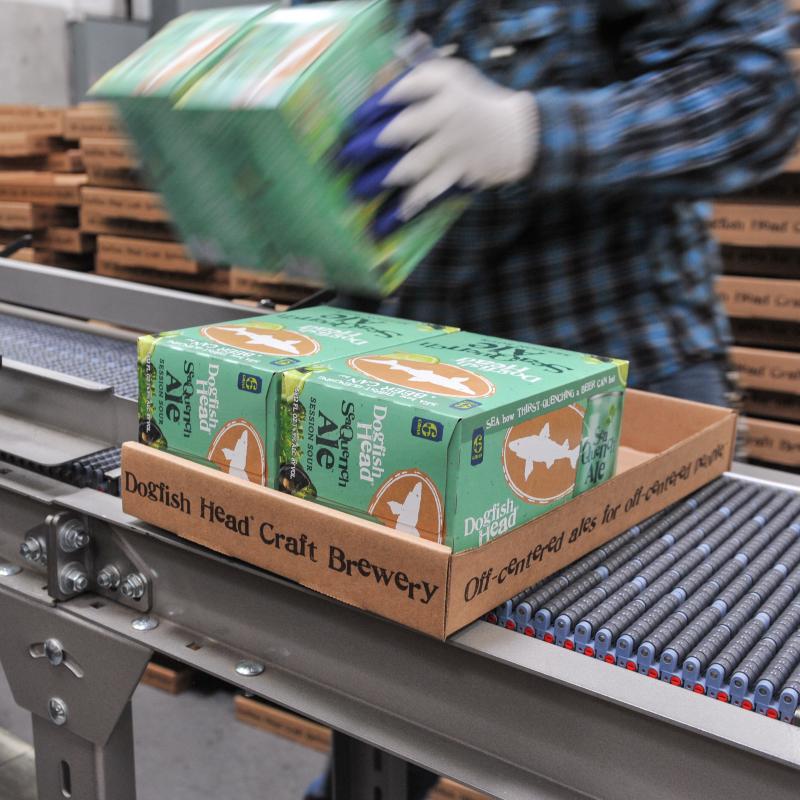Dogfish’s SeaQuench riding tide of Millennials’ influence
Dogfish Head debuted its SeaQuench Ale in 2016 when it first opened its doors to Chesapeake and Maine in Rehoboth Beach. The session sour beer joined cocktails on tap, and revolutionary smoky sea salt-infused oysters, as new Dogfish products introduced when the restaurant opened.
In 2017, its popularity gaining a foothold in the dog-eat-dog American beer market, SeaQuench Ale earned Brewbound magazine's Product of the Year Award. The Cape Gazette published a press release about the award in its Dec. 8 edition. Look for more details about the award there.
The story warranted more insight so I tracked down Dogfish's Sam Calagione. He's been on the West Coast attending beer events in Los Angeles and San Francisco, and doing reading from his books detailing the rise of Dogfish.
Sam made big statements worth passing along. First, he noted that this is the first year that the number of Millennials - people born from the early 1980s to the early 2000s - has surpassed the number of Generation Xers and Baby Boomers. "Millennials like craft beers; they like independent brewers; they like lower alcohol drinks, and they like flavor-full drinks. That's different than the early days of Dogfish when we were brewing Midas Touch and 90-Minute. Their alcohol content is closer to wine. The Millennials are really influencing style and lower alcohol levels."
He said SeaQuench Ale is brewed with lime juice, black limes, lime peel, sea salt and enough hops to make it an authentic beer. He said it is also appealing to Pinot Gris, Margarita and Michelob Ultra drinkers. "I mention Michelob Ultra," said Sam, "because SeaQuench is low alcohol and low carb."
More about how Dogfish worked its SeaQuench recipe for marketability in a bit, but first and foremost, Sam talked about his co-workers.
Dogfish Head's unsung heroes
"It's people first and recipe second. We projected a 10 percent increase in beer sales in 2017, but with SeaQuench's popularity and our other beers doing well, we're running 18 percent ahead of last year. That's a big change in what we get out each week," said Sam.
"That's our co-workers in brewing, packaging, overall operations and shipping. We've had to step up with overtime shifts, weekend work. Of our 300 total co-workers, more than 100 of them are in brewing operations. They're living here in Sussex. They're getting up every day, going to work and making beer and helping us achieve explosive growth during one of the most competitive times in America for beer. They're the real unsung heroes in the company."
Explosive growth? Explosive hardly describes what's happened over the past 22 years. Sam said when Dogfish came on the scene in 1995, there were 600 commercial breweries in the U.S. with a new one coming online at a pace of about one per week. "Now," he said, "there are 6,000 breweries in the U.S. with two new commercial breweries coming online every day. In America, the volume of beer sales is actually down by about 1 percent. But craft beer sales are up 4 to 5 percent, and Dogfish is running 18 to 19 percent ahead. Fortunately our engineering team is staying ahead of the growth. It's all very humbling."
Sam was in Los Angeles and San Francisco meeting with people who are "repping this little brewery in Delaware - so far away. Every box of beer we ship out there has a map of coastal Delaware printed on it."
Now, back to SeaQuench Ale. Sam said it is the fastest growing beer in Dogfish history.
"It's intensely flavored," he said. "We set out to objectively brew the most thirst-quenching beer Dogfish has ever brewed. We did lots of measuring. We collaborated with beverage scientists - people who used to work with the Gatorade institution - to get the right mix of electrolytes and minerals. We worked at the microbiology level to craft the recipe for SeaQuench. I think that's the reason why this beer has found the white space it has."
In terms of volume of beer, SeaQuench Ale, according to Sam, is on a growth trajectory that will soon make it Dogfish's second largest selling beer, behind 60 Minute. "I think it's going to eclipse our 90 Minute - which is now our second-largest seller - in the first half of 2018. It's on pace to be the No. 1 session sour beer in the country. [Session beer is defined as beer with alcohol less than 5 percent by volume.]
"My friends at Sierra Nevada also have their Otra Vez in the session-sour category and they're doing well with that. But I think we're on pace to eclipse Otra Vez."
Sam said Dogfish plans to spend $10 million in 2018 for capital improvements, including larger tanks. "We're set up to produce over 300,000 barrels of sold beer in 2018. But we built our facility to be able to expand to 600,000 barrels."
So, will there come a time in the near future when Dogfish has to turn those roots it's nurturing on the West Coast into another brewing facility?
"We can get to twice our current size with our existing facility. We're already looking at adding another 30-40 jobs in 2018.
I'd say we have about a four- to five-year runway before we start contemplating building another facility."
But that might not be enough to keep Sam occupied and looking for the next trend to get ahead of. In the meantime, is he writing or considering writing another book to talk about his company's continuing evolution?
Sam laughed. "If I start thinking about another book the title will have to be Why I Got Divorced. Mariah [Sam's wife and partner in Dogfish Head] definitely has an opinion on that idea."
















































